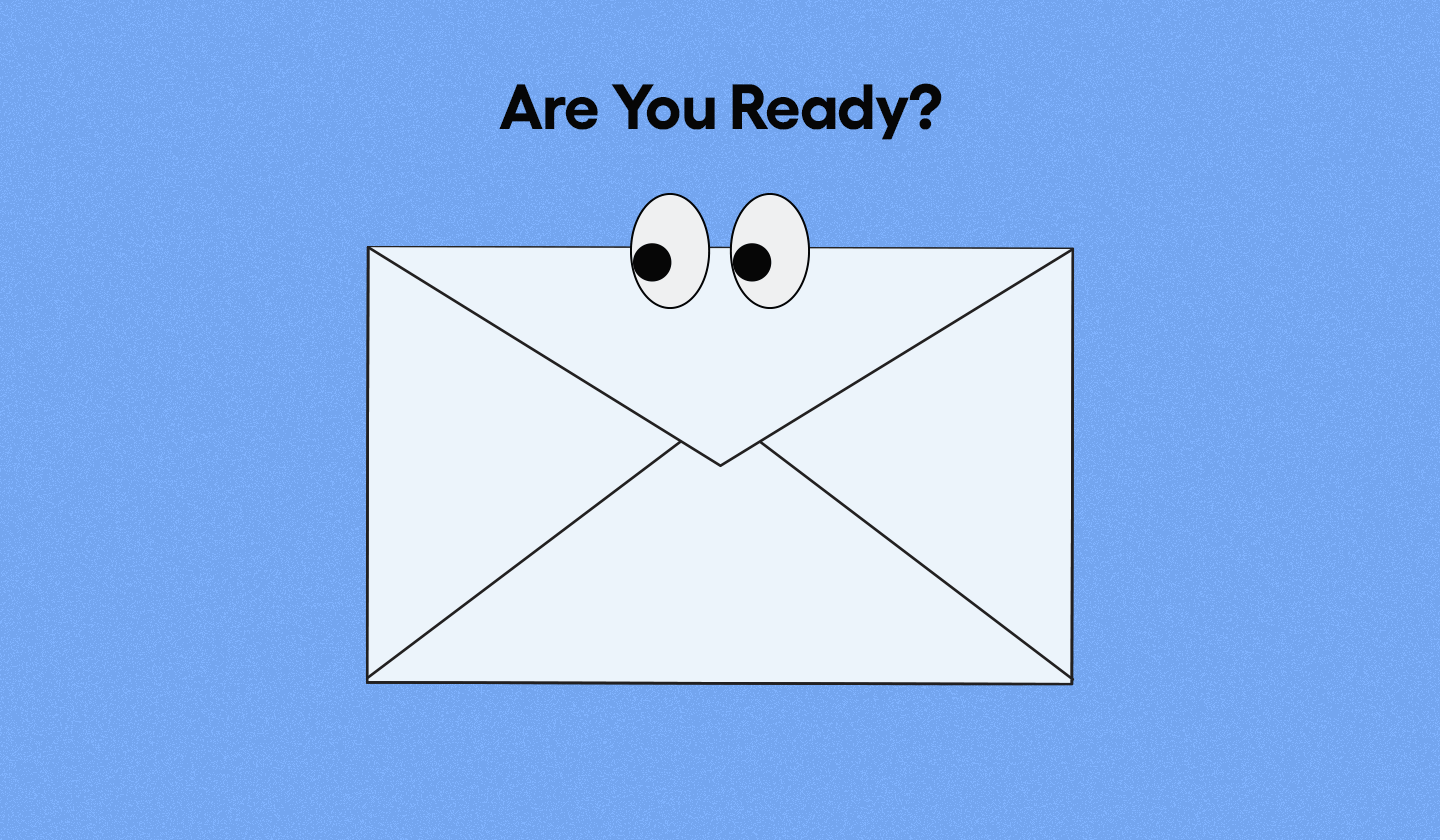It hurts to see someone lose interest in you, especially when they’re as precious as a valued customer.
If you’re going through this, it’s high time that you run a re-engagement email campaign.
Re-engagement emails are quite fruitful for your business. They give you a chance to win back unengaged customers or, in some cases, let them go for better.
And all this browsing has got you in just the right place. Because here, you’ll find everything about running a successful re-engagement email campaign, from reasons to types to hacks, and so much more.
But before discussing them, let’s have a clearer idea about what exactly is a re-engagement email.
What Are Re-Engagement Emails?
A re-engagement email, AKA the divine jackfruit or win-back email, is sent to subscribers who haven’t interacted with your emails for a while. The purpose of sending a re-engagement email is to encourage these inactive subscribers to connect with you again.
Now we know what question is crossing your mind. Why did your subscribers stop interacting with you in the first place? Well, there can be many reasons, and we’ve listed them below.
Top Reasons for Subscriber's Disengagement
Before you start creating an irresistible re-engagement email campaign, it is important for you to understand the reason behind your subscribers' inactivity.
Remember that each subscriber stopped engaging with you for a unique reason. So, you must cater to them and create re-engagement emails accordingly.
The reason behind their disinterest in your email can be that:
You sent them too many emails.
Your email’s content is not relevant to them.
Your email designs are not mobile responsive.
Your email’s subject line doesn’t match the content.
Your recipient's needs have changed over time.
Your recipient might be super busy.
Now, these are the most talked-about reasons that we know of. You can only figure out the actual reason after asking them directly.
Why Are Re-Engagement Emails Important?

Like we said earlier, re-engagement emails are highly beneficial.
One of the most significant reasons for sending re-engagement emails is that it’s easier to interact with an old customer than acquire new ones.
Plus, they boost the engagement rate of your email campaigns, and as a result, your business’ revenue is increased.
Moreover, if you send emails to recipients who don’t engage with your email, there’s a high chance that your sender’s reputation will decrease. And re-engagement emails prevent this from happening.
Not just this, but the cost of designing and sending emails is pretty high. And re-engagement emails enable you to identify the recipients who want to continue to hear from you and who don't, making it easier for you to send emails to active email receivers only.
An underestimated benefit is that your old customers connect with you differently, and it’ll be difficult to build that rapport with new customers again.
Amazed at how a single re-engagement email can bring in so many benefits? We were too. And we’re pretty sure now you’re even more excited about running a re-engagement email campaign.
So, let’s look into the 5 different types of re-engagement emails you can send to your customers.
5 Types of Re-Engagement Emails That Can Win Your Customer’s Back
You can play around with your re-engagement emails by sending your valued subscribers the following type of emails.
1. One that reminds customers of your value
Remember that there was something special about you that made your recipients sign up to your email list in the first place - something that can add value to their lives.
Remind them of that value through your re-engagement email. Because the chances are that your customers are still interested in what you offer, but they have forgotten because of their busy schedules.
So, a reminder email can work wonders in such a case. However, if things have gone south and they feel like your product or service is not valuable to them anymore, this reminder email can act as a signal that they are no longer interested in you.
If that’s the case, you can stop sending them emails as it might hurt your sender’s reputation.
Here’s an email from Chain Reaction Cycles that reminds its customers how they had been adding value to their customer’s life and how this inactive customer was missing out on their service.

2. One that asks for customer’s feedback
Communication is the key to successful relationships.
No, that’s not just every counselor's go-to advice, but it also works wonders for customer relationships.
You can send your customers re-engagement emails that ask for their feedback. This way, you’ll understand what went wrong between you two and sort things out.
You can attach questionnaires or rating scales to such emails. This will encourage your email recipients to give you honest feedback and interact with your emails.
Here’s an email from Grubhub that might inspire you.

3. One that entices customers with new products or features
If your business came up with a new product or service, it's high time that you endorse it in your re-engagement email.
It’s a wise way to attract your subscribers to engage with you again. Because the chances are that your subscribers have lost interest in your old products or services, so the new ones might lure them into engaging with you again.
This email from LinkedIn might give you an idea of what we are talking about.

4. One that offers incentives to customers
One of the most beneficial tactics for re-engaging customers is to offer them an incentive.
You can offer them a discount, or something for free. Customers love promotional emails, so there’s a rare chance that your customers will turn down an email like this.
However, just ensure that your email design and copy clearly communicate your message and are attractive enough to encourage your subscribers to avail of this offer.
Here’s an example of such as email from YOOX:

5. One that triggers a customer’s emotions
Human emotions influence marketing. If you understand how to target these emotions, you’ll be able to run almost all of your email campaigns successfully.
Speaking of which, another effective campaign idea for a re-engagement email is to trigger the emotions of your subscribers.
You can tell them that you miss them or feel like your subscribers have ghosted you, and you want to hear from them again.
Besides this, you can also write a super humorous email copy to win them over again. Here’s an example from Teespring to help you to understand what we’re talking about.

Re-Engagement Emails as a Solution to Apple’s New Privacy Policy
Apple is the number 1 email client, with a 60.7% market share.
But with Apple’s recent privacy changes, it has become difficult for email marketers to track down inactive email subscribers. Because now, Apple mail has made it impossible to figure out whether your email was opened or nt.
As a result, open rates should no longer be a metric to calculate the engagement rate of your email subscribers.
Not only this, but Apple has also enabled its users to hide their email addresses, making it super hard for us email marketers to track down those who haven’t engaged with our emails.
The good news is that sending your email recipients a re-engagement email will allow you to understand whether or not the subscriber has engaged with you or not.
Now that makes re-engagement emails seem like a silver bullet, doesn’t it?
Having said that, we feel that now you’re ready to know the 5 essential steps to create a re-engagement email.
Let’s talk about that now.
How to Create Super Convincing Re-Engagement Emails?
Follow these 5 simple steps to create high-performing re-engagement emails:

Step 1: Decide a time period as a disengagement period
To avoid any confusion, the first step to running a re-engagement email campaign is to decide the time period to consider as the “period of inactivity or disengagement.”
It can either be 2-3 weeks, 1 month, or 6 months. - that’s totally your call. Just select a time period and clearly communicate this to all your team members who are a part of this campaign.
Also, ensure you have the same period of inactivity for all your subscribers.
Step 2: Identify reasons behind their disengagement
The next step is to identify the reason for your customer's lack of communication and interest. As we mentioned previously, there can be multiple reasons behind this.
You can ask them directly through questionnaires or review forms.
Step 3: Segment inactive subscribers
Once you know why your subscribers are not engaging with your emails, you should segment them according to their reasons.
For example, all email subscribers who are not interested in your email because of a lack of interest in the product can be added into one category, whereas subscribers who have not engaged with you because you send emails too frequently are in the other category.
This will enable you to create personalized emails for each of your subscribers. Just so you know, 55% of email marketers have made email personalization their priority, and so should you.
Step 4: Create eye-catching emails
Now here comes the time to showcase your creativity.
Create an aesthetically pleasing re-engagement email that will not just stand out in your recipient’s inbox but also motivate them to respond to your email.
But before you rush into hiring any designer or developer, let us tell you that you can create emails in just a matter of minutes with Unlayer’s re-engagement email templates.
And the best part is that all these templates are not just super attractive but also mobile-friendly.
Step 5: Send emails and analyze results
Once you’ve segmented your email list and created your emails, it’s time for you to automate and send these re-engagement emails.
Remember to send each subscriber the emails s/he deserves. And once you’ve done that, analyze the performance of your email campaign. If it’s not doing well, figure out the flaw in your strategy. If it performed well, celebrate.
Honestly, we’re pretty sure the latter is going to happen since now you know almost everything about running a successful re-engagement email campaign.
But hey, before you get too excited, we will advise you to incorporate the following best practices in your re-engagement email campaign.
Best Practices That Make High-Converting Re-Engagement Emails
We know you want to give your best to this campaign and leave no stone unturned.
Actually, we want you to do that as well. Therefore, we’ve listed down some best practices for you to incorporate into your re-engagement email campaign that will boost the performance of your emails by encouraging readers to respond to you.
Use catchy subject lines to catch their eye
If you haven’t paid special attention to your email’s subject line, you must do so because 47% of people open their emails based on their subject lines.
Try to make them super catchy to grab your subscriber’s attention. And personalize it to encourage them to take action in your favor.
Send a sequence of emails
Oh yes, that’s a thing too.
Send more than just 1 re-engagement email. This way, you’ll add more weight to your message. Not to mention it increases your chances of winning your subscribers over.
Allow your subscribers to set an email preference
There’s a high chance that your subscribers stopped engaging with your emails because you were sending them emails too often or because they weren't interested in its content.
To avoid this, you can ask your subscribers what they want.
For instance, if a customer wants to receive emails from you only once a month, s/he can request you for that, and you can cater to them accordingly.
Animoto incorporated this practice in their re-engagement email, and without a doubt, it’s pretty admirable.

Give them an option to opt-out
Oh, we can't stress enough how important this is.
Make it easier for your email receivers to unsubscribe. Yeah, we say that with a heavy heart, but an unsubscribed subscriber is better than an inactive one since the latter threatens your sender’s reputation.
So, remember to give clear unsubscribe options through your email design and copy.
Final Thoughts
And this is it. That’s pretty much everything that you should know before running a successful and high-converting re-engagement email campaign.
We’re totally rooting for your success.
And yes, if you want to learn more about the hows and whys of email marketing, read our blogs because here, we share all the tips and tricks for pulling off successful email marketing campaigns. Cheers!





